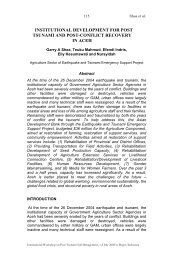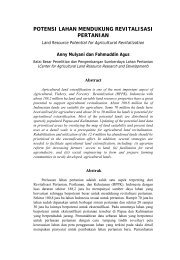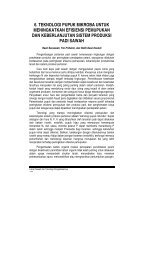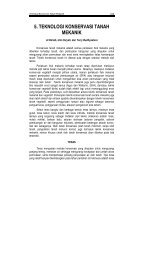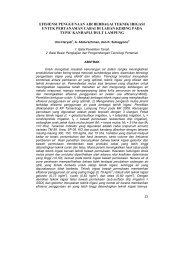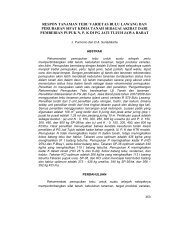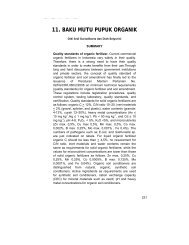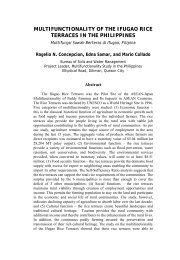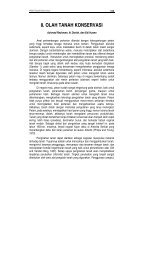Proceedings - Balai Penelitian Tanah
Proceedings - Balai Penelitian Tanah
Proceedings - Balai Penelitian Tanah
You also want an ePaper? Increase the reach of your titles
YUMPU automatically turns print PDFs into web optimized ePapers that Google loves.
43<br />
MANAGING TSUNAMI-AFFECTED SOILS<br />
IN ACEH AND NIAS<br />
Peter Slavich 1 , T Iskandar 2 , Achmad Rachman 3 ,<br />
Prama Yufdy 4 , Hasil Sembiring 5<br />
Slavich et al.<br />
1 NSW Department of Primary Industries (NSW DPI), Australia; 2 Aceh<br />
Assessment Institute for Agricultural Technology (BPTP NAD), Indonesia<br />
3 Indonesian Soil Research Institute (ISRI), Indonesia; 4 North Sumatra<br />
Assessment Institute for Agricultural Technology (BPTP SUMUT), Indonesia;<br />
5 Indonesian Rice Research Centre (IRRC), Indonesia<br />
Abstract<br />
The impacts of the earthquake and tsunami in NAD province and<br />
North Sumatra caused large changes to the landforms, soils and the<br />
hydrology of coastal floodplains used for agriculture. These changes<br />
include reductions in land elevation, opening of estuaries, erosion of<br />
beach sands, deposition of transported soils and marine sediments,<br />
and salinisation of soil and water resources. The extent of these<br />
changes was highly variable across the affected area which resulted<br />
in site specific effects on soil properties and crop production. This<br />
paper summarises the main tsunami impacts affecting soils and<br />
strategies to manage tsunami affected soils for cropping.<br />
INTRODUCTION<br />
The impacts of the earthquake and tsunami in NAD province and Nias<br />
on agricultural lands were most severe on the narrow coastal strip<br />
along the west coast of Sumatra. They were also wide spread on the<br />
coastal river floodplains of the east and west coasts. The impacts<br />
caused major changes to the hydrology of the floodplains, coastal<br />
wetlands and estuaries. The earthquake resulted in a reduction in land<br />
elevation along the west coast of Sumatra and east coast of Nias,<br />
causing previous coastal agricultural land to become submerged<br />
under the sea (Figure 1).<br />
The erosive forces of the tsunami opened estuaries, transferred beach<br />
sands and coastal acid sulphate soils inland and reshaped wetlands.<br />
The tsunami also deposited sediments from the sea floor on the land.<br />
These transported terrestrial and marine deposits blocked drainage<br />
and irrigation systems. The deposition of variable depths of sand, clay<br />
and peat materials (Figures 2-5) resulted in a more heterogeneous<br />
soil landscape. There was also significant salinisation of soils due to<br />
sea water inundation. The salinity impacts were most severe in low<br />
lands closest to the sea where landscape changes were greatest.<br />
International Workshop on Post Tsunami Soil Management, 1-2 July 2008 in Bogor, Indonesia



